The entry wall frames the projected video of Roger Castillo who tells the story of the day he and his dog found the mammoth fossils along the bank of the Guadalupe River.
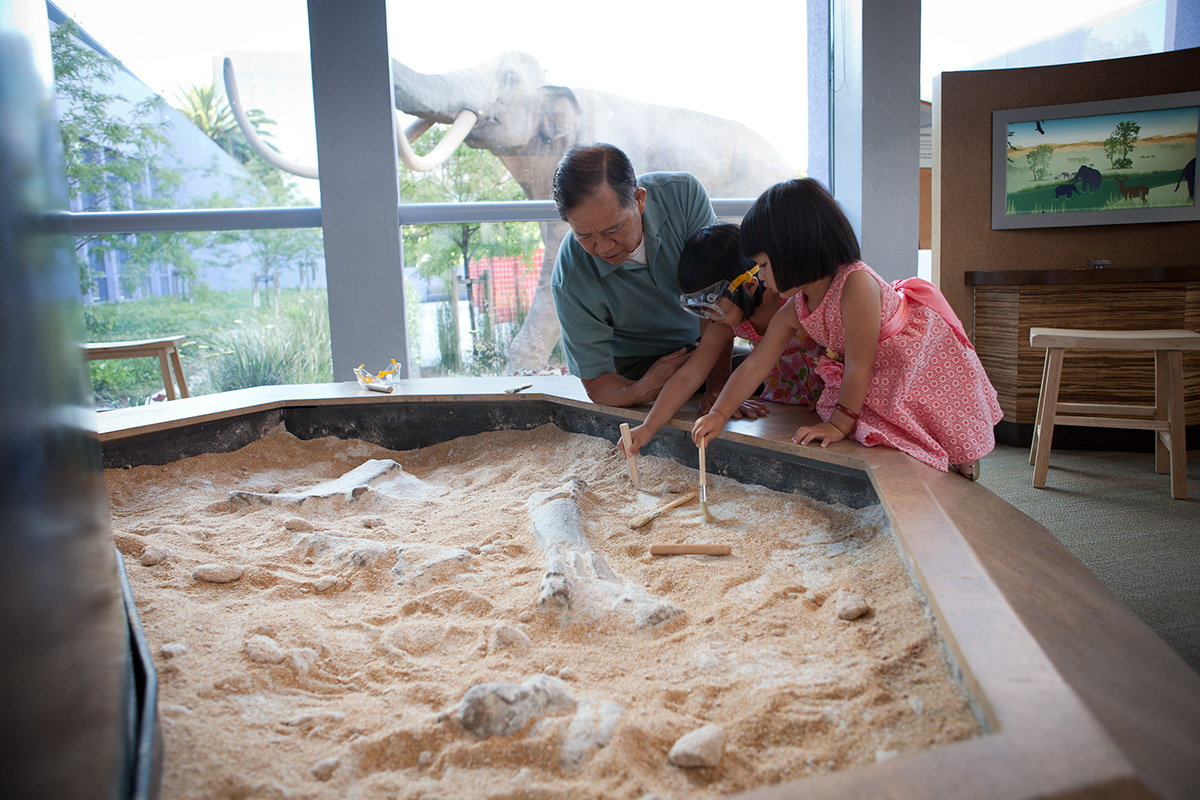
Using brushes and simple chisels, children begin to find their own fossils at the Bone Dig.

Turning the spin browser backward and forward, visitors explore an animation that illustrates how the fossils were formed and how change over time has affected the valley.
Children get up close to the actual fossils and use a rotating scale model of the skull to better understand the orientation of the fossil.

Children peer through a powerful magnifying lens to match plant samples to the replica dung and the living plants in the Ice Age garden just outside the window.
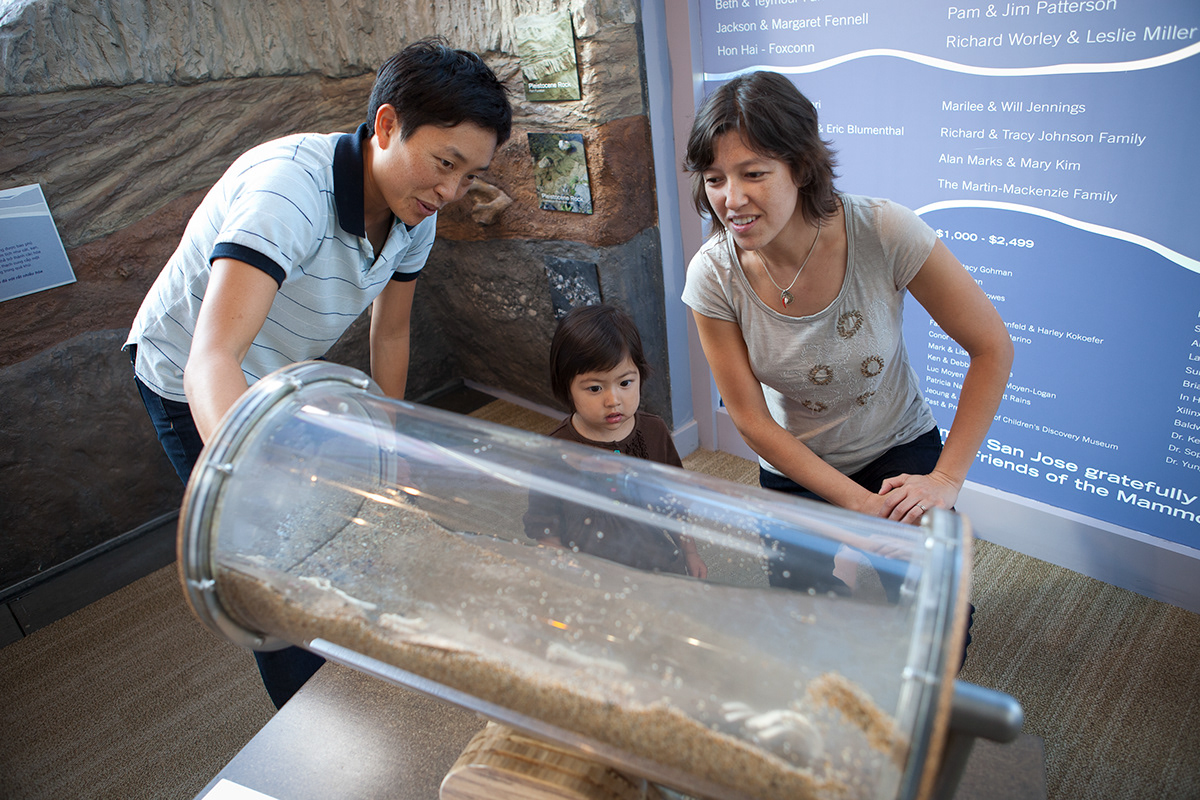
Tipping the erosion model illustrates how sediments move and settle to cover and expose fossils.

The statigraphy layers show that fossils are found in the sedimentary layer.

The pelvis fossil and replica skull fossil are both displayed in view of their resin counterparts in the skeletal replica so visitors can see them in context.
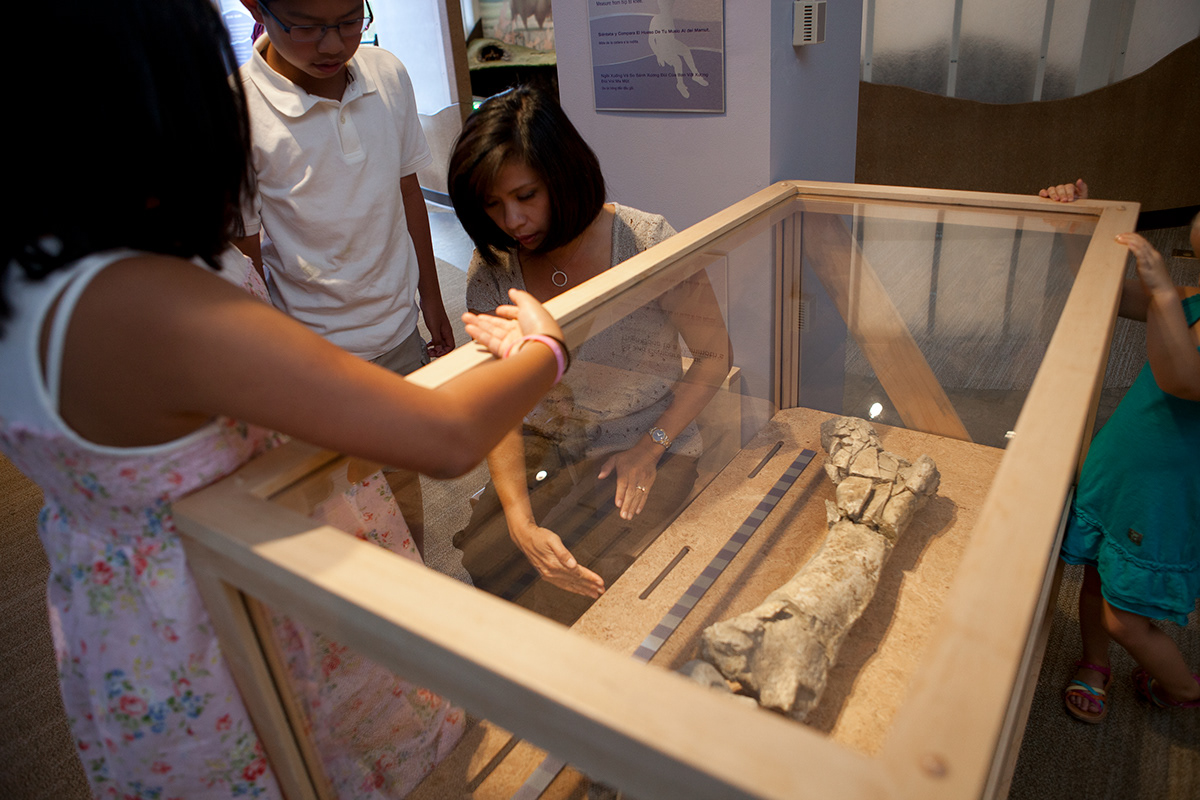
Visitors compare their own leg bones to the fossil mammoth femur in the case.
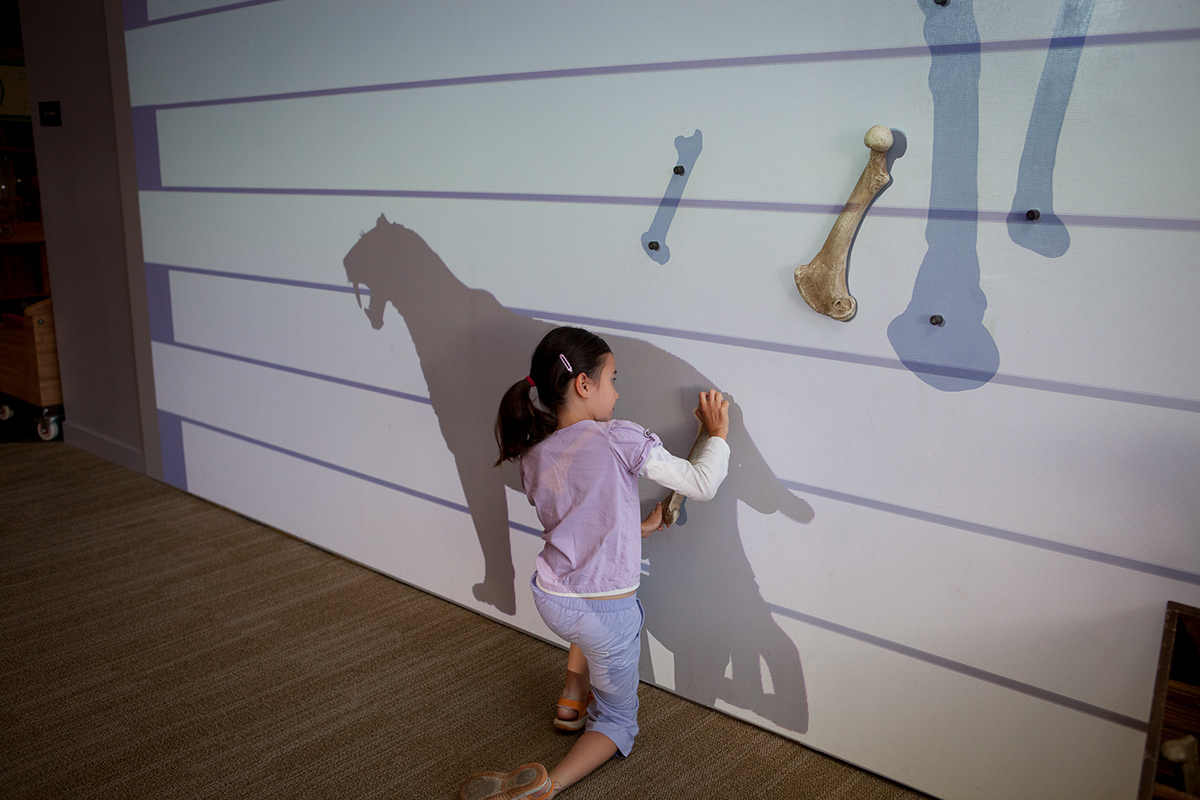
By matching replica femurs to shapes on the wall, visitors project full-size silhouettes of the animals to which those femurs belonged.


Inspiring awe and wonder, the centerpiece of the exhibition is the dramatically lit eight-foot tall skeletal replica. Its artfully crafted wire mesh illustrates the connection between surface and skeleton.

Younger visitors refer to the replica skeleton to assemble skeleton puzzle, while older visitors are challenged to identify a set of mystery bones.
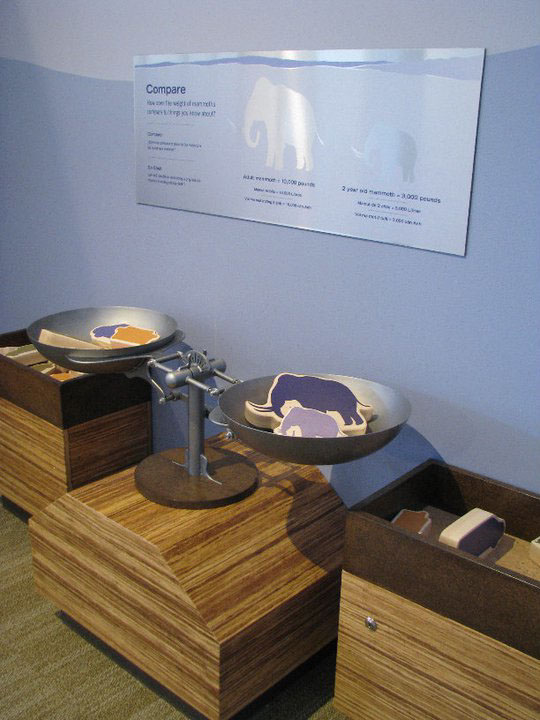
Using a custom designed steel scale, visitors compare the weights of familiar objects with the weights of adult and juvenile mammoths.

The Scientist Stories kiosk features 24 documentary shorts that answer questions that children may have like “What do scientists do?” and “What was it like when mammoths lived here?”

Children arrange these illustrated wooden story cards to tell their own stories.

Children cast shadows with articulated wooden puppets to tell stories of the Pleistocene.
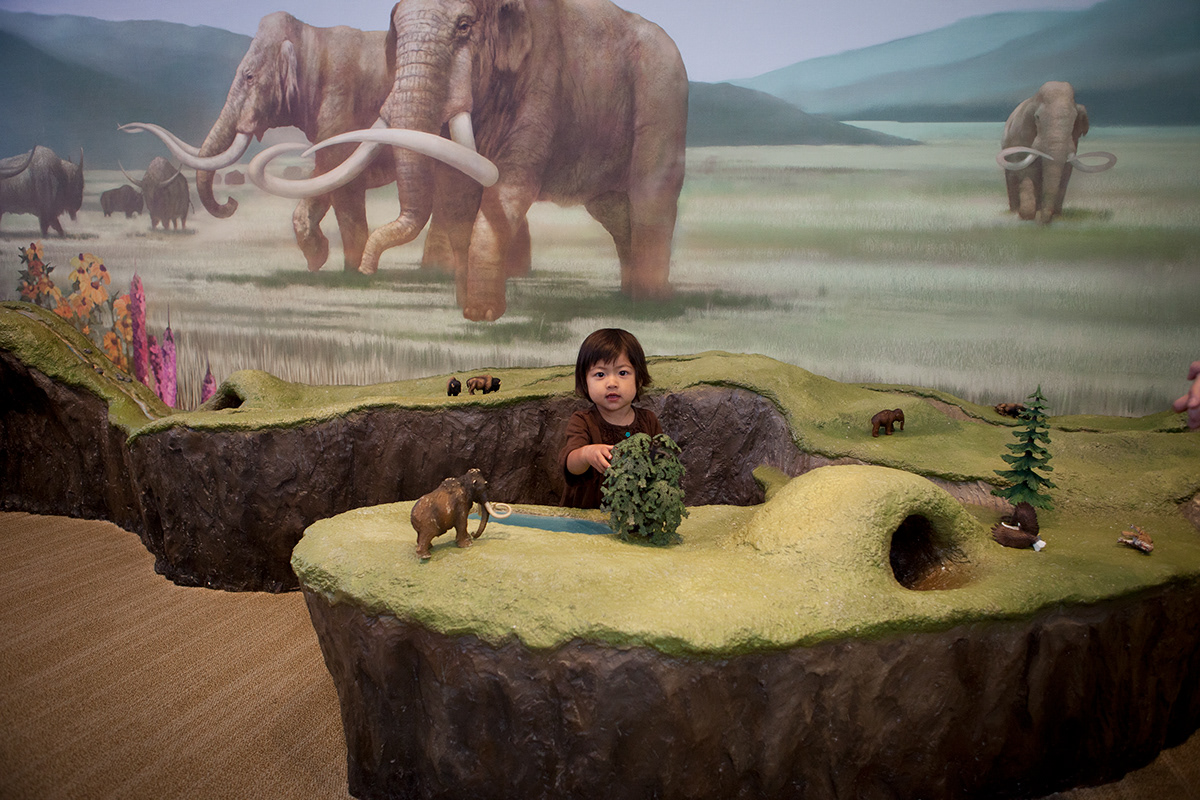
Children enter another world, nestled within translucent walls with a mural backdrop and scale landscape. Using their imaginations, they move Pleistocene animal models and create their own stories.


